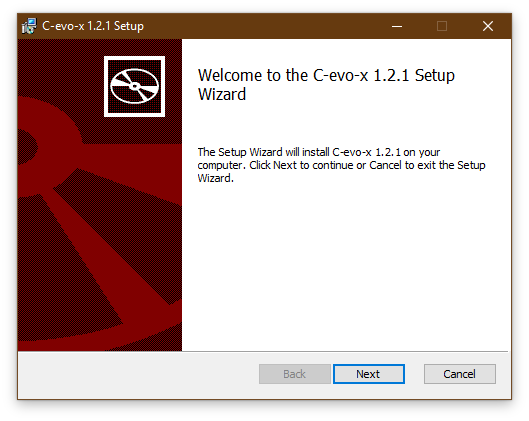C-evo-x
A freeware empire building game.

WiX Installer
Poking around in the C-evo\ program directory, I can see by peeking inside
the unins000.dat file that the C-evo installer was built with Inno
Setup, which is open source and still seems to be going strong.
Unfortunately, the Inno Setup project isn’t included with the C-evo source.
Building a basic installer is a modest amount of work. Half the trouble is figuring out what files to include and where they need to go; I already know that for C-evo-x. A quick search of the internet shows that MSI installers seem to be the current mainstream choice. Microsoft doesn’t provide any high level tools for building MSI installers, but more searching points me at the WiX Toolset
WiX is … okay. It’s got some compelling strengths. It’s open source and command line driven. There’s a decent tutorial and comprehensive documentation. I was able to define and build a minimal installer in an hour or so by following the tutorial. Building on that was straightforward. The command line tools and generated installer have just worked without hiccup. WiX really nails these core things.
But WiX has lots of warts. Installers are defined using a custom XML
vocabulary. Okay, I know that building DSLs in XML was in vogue in the late
90’s and early 2000’s, and I’ve worked with plenty of them over the years. The
elements and attributes in the WiX XML schema are all in upper camel case (like
<Component> and <ComponentRef>) which is very Microsoft-ian.
Components are the core thing in WiX, typically corresponding to an installed
file. Unfortunately, each component need to be declared as child of both a
<Directory> and a <Feature>, but the WiX DSL doesn’t allow you to place
<Directory> elements inside <Feature> elements, necessitating duplication
through the use of both <Component> and <ComponentRef> elements. This
requirement to refer to components in multiple places means every component
need to have a unique Id attribute, and it’s the responsibility of the
programmer to make sure Ids are unique for all the defined components.
There’s no way to fully DRY out your WiX code.
Within certain attributes, some values are variables that have special meaning.
For example, the Id attribute of <Directory> can be set to
ProgramFilesFolder or INSTALLDIR, which represent the C:\Program Files\
directory and the installation directory selected by the user, respectively.
Other attributes allow the installer to substitute values defined elsewhere,
such as the Key attribute for the <RegistryValue> element, which can be
something like Key='Software\[Manufacturer]\[ProductName]'. If the WiX
documentation enumerates all these special cases, I haven’t found that part
yet.
Finally, a WiX installer is built in two steps, analogous to compiling and
linking. That’s easy enough, no problem there. The WiX compiler is called
candle.exe and the linker is called light.exe. Ancillary tools include
lit.exe and heat.exe. Cute, but really not very helpful.

But in the end, it works.